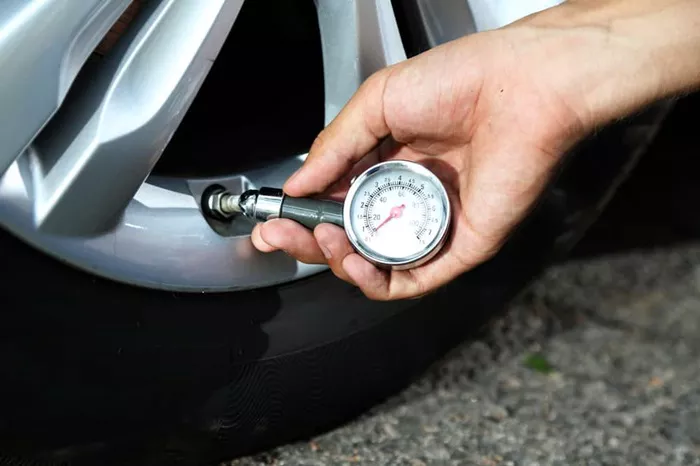This article delves into the critical aspects of tire pressure, from its definition to the risks associated with under-inflation and over-inflation. It provides specific recommendations for optimal tire pressure based on vehicle type and factors influencing tire pressure. Step-by-step instructions for checking and adjusting tire pressure, along with maintenance and safety tips, are included to ensure vehicle safety and performance.
Tire pressure plays a crucial role in ensuring safe and efficient driving. Understanding what constitutes good tire pressure is essential for maintaining vehicle safety, performance, and longevity. In this comprehensive guide, we will explore the definition of tire pressure, optimal pressure recommendations, factors affecting tire pressure, risks associated with under and over-inflation, checking and adjusting tire pressure procedures, maintenance tips, and safety precautions.
Definition of Tire Pressure:
Tire pressure refers to the amount of air inside a tire, measured in pounds per square inch (PSI). It is vital for supporting the vehicle’s weight, maintaining stability, providing traction, and absorbing shocks from the road surface. Proper tire pressure is critical for optimal handling, fuel efficiency, tire wear, and overall safety.
Optimal Pressure Recommendations:
The optimal tire pressure varies depending on the vehicle type, make, model, and tire size. Generally, the recommended pressure is specified by the vehicle manufacturer and can be found in the owner’s manual or on a label inside the driver’s door jamb. It is essential to adhere to these recommendations for optimal performance and safety.
Car: Recommended tire pressure typically ranges from 30 to 35 PSI, but check the owner’s manual for precise values.
Truck: Recommended tire pressure varies based on the truck’s weight and tire size, ranging from 35 to 80 PSI.
Motorcycle: Motorcycle tire pressures range from 25 to 42 PSI, depending on the bike’s weight and tire type.
Factors Affecting Tire Pressure:
Several factors can influence tire pressure, including temperature changes, load capacity, and driving conditions. Understanding these factors is crucial for maintaining consistent tire pressure.
Temperature Changes: Tire pressure can fluctuate with temperature changes. As temperatures rise, tire pressure increases, and vice versa.
Load Capacity: Heavier loads require higher tire pressure to support the weight adequately. Refer to the owner’s manual for load-specific recommendations.
Driving Conditions: Aggressive driving, rough roads, and high speeds can increase tire temperature and pressure, necessitating periodic checks and adjustments.
See also: 8 Things to Note When Cleaning Your House with Pressure Washer
Under-Inflation Risks:
Driving with under-inflated tires poses significant risks to safety, vehicle performance, and fuel efficiency. It is crucial to understand the dangers associated with under-inflation:
Reduced Fuel Efficiency: Under-inflated tires increase rolling resistance, leading to higher fuel consumption and decreased mileage.
Tire Wear: Uneven tire wear patterns can occur, reducing tire lifespan and necessitating premature replacement.
Increased Risk of Blowouts: Under-inflated tires are more susceptible to overheating, which can result in blowouts, especially during high-speed driving.
Over-Inflation Risks:
While under-inflation is a concern, over-inflated tires also pose risks that can affect vehicle handling, tire wear, and safety:
Reduced Traction: Over-inflated tires have a smaller contact patch with the road, leading to reduced traction, especially in wet or slippery conditions.
Uneven Tire Wear: Excessive pressure can cause the center of the tire to wear faster than the edges, leading to uneven tread wear and potential handling issues.
Potential Handling Issues: Over-inflated tires can affect steering responsiveness and stability, compromising overall handling and control.
Checking and Adjusting Tire Pressure:
Regularly checking and adjusting tire pressure is crucial for maintaining optimal performance and safety. Follow these steps to ensure proper tire pressure:
Use a reliable pressure gauge to measure tire pressure when the tires are cold (before driving or when they haven’t been in use for several hours).
Remove the valve cap and firmly press the gauge onto the valve stem to obtain an accurate reading.
Compare the measured pressure with the recommended pressure specified by the vehicle manufacturer.
If the pressure is low, inflate the tires using an air compressor or visit a gas station with an air pump. If over-inflated, release air using the gauge’s pressure release valve.
Recheck the pressure after adjustments to ensure it matches the recommended values.
Frequency of Checking:
It is recommended to check tire pressure at least once a month and before long-distance trips. Additionally, monitor pressure during extreme temperature changes and inspect tires for visible damage or irregular wear patterns regularly.
Maintenance Tips:
In addition to regular pressure checks, here are essential maintenance tips to prolong tire life and ensure optimal performance:
Inspect for Punctures: Regularly check tires for nails, screws, or other objects that may cause punctures or leaks.
Check Tread Wear: Monitor tread depth and look for signs of uneven wear, which can indicate alignment issues or tire rotation needs.
Rotate Tires: Rotate tires periodically (every 5,000 to 7,000 miles) to promote even wear and extend tire lifespan.
Safety Tips:
Maintaining proper tire pressure is paramount for vehicle safety. Follow these safety tips to ensure a safe driving experience:
Respond to Pressure Warnings: If the tire pressure monitoring system (TPMS) alerts you to low pressure, inspect and adjust the affected tire promptly.
Emergency Preparedness: Carry a spare tire, jack, and tire-changing tools in your vehicle in case of a flat tire or blowout.
Seek Professional Help: If unsure about tire pressure or notice unusual tire behavior, consult a professional mechanic for inspection and adjustments.
Conclusion
Proper tire pressure is not just about maintaining a specific PSI; it’s about ensuring vehicle safety, performance, and longevity. By understanding the optimal pressure recommendations, factors influencing tire pressure, risks of under and over-inflation, checking and adjusting procedures, maintenance tips, and safety precautions outlined in this guide, drivers can enhance their driving experience and contribute to safer roads for everyone. Regular attention to tire pressure and overall tire maintenance is a small effort that yields significant rewards in terms of safety, efficiency, and peace of mind on the road.

